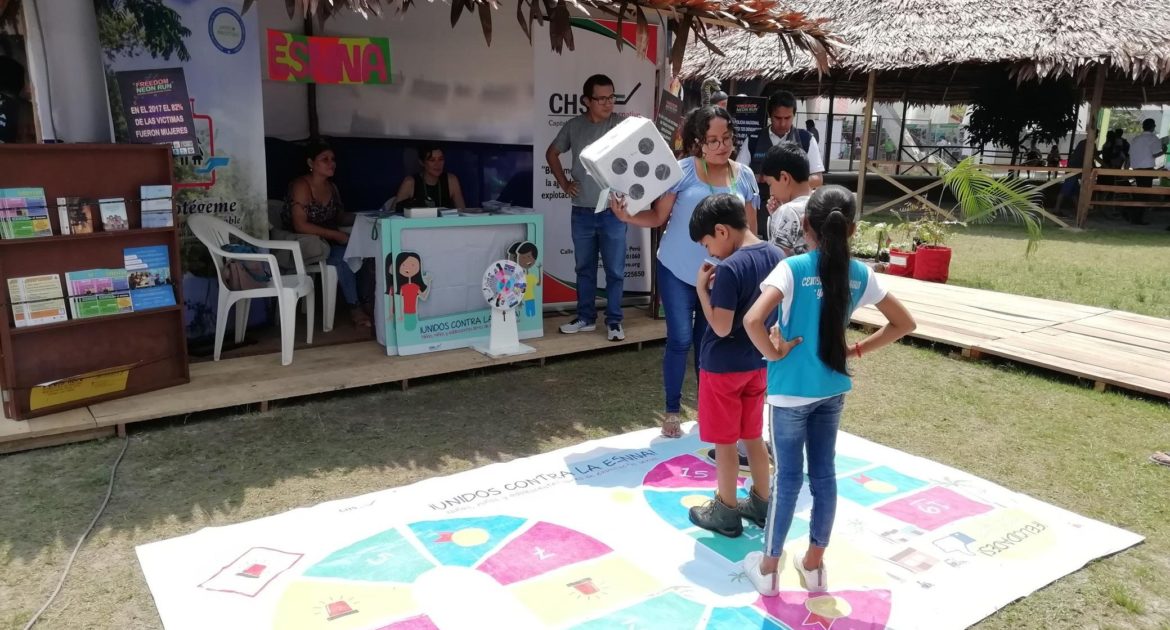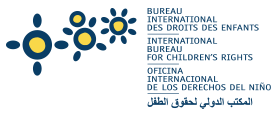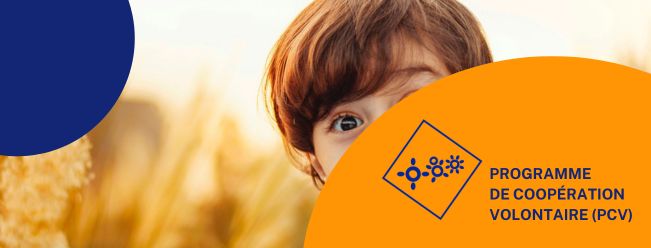
The author, Christine Richard, is currently deployed in Peru as a volunteer social work consultant as part of the “Protection of children, women and other vulnerable communities (PRODEF)” project, implemented by the International Bureau for Children’s Rights and Lawyers Without Borders Canada (LWBC), with financial support from the Government of Canada through World Affairs Canada. Christine began her six-month mandate in June 2019, working for the CHS-Alternativo organisation.
In mid-August 2019, the city of Iquitos, Peru, hosted the Expo Amazonica Fair, the nation’s largest trade event in the industries of tourism, trade and gastronomy of Peru’s Amazonian regions. Hundreds of artisans, producers, private Amazonian companies, organisations and ministries were present to showcase their products and services promoting the Amazonian culture.
CHS-Alternativo was also present on site to inform the public about its services and, in particular, about a problematic issue in the Amazon region: the sexual exploitation of children.
In Peru, sexual exploitation has two dimensions: human trafficking for the purpose of sexual exploitation and the sexual exploitation of children outside the context of trafficking. These two cases may share some similarities, but are highly different situations, governed by distinct legislations in Peru. The process of the recovery of victims may also vary from one case to another.
Human Trafficking
The purpose of human trafficking is inevitably the partial or total control of a person for the purpose of exploitation. CHS-Alternativo reveals in its reports that in Peru, this exploitation can take the form of forced labour without adequate remuneration, sexual exploitation, human trafficking, begging or, in very rare cases, the extraction or trafficking of organs.
In Peruvian reality, most trafficking cases are the result of deception that induces the victim to migrate voluntarily. Enticing job offers and seduction manoeuvres are common methods of entrapment designed to remove a person from their familiar surroundings and isolate them.
It may also be the case that the victim is entrusted by their family to a relative to enable them to live a better life and break the cycle of social exclusion and extreme poverty in which they live. However, they eventually become trapped and deprived of any communication with their family.
SEXUAL EXPLOITATION OF GIRLS, BOYS AND ADOLESCENTS
CHS-Alternativo considers sexual exploitation to be the use of a person’s body for sexual or erotic purposes in exchange for money, goods or “profit” (money, gifts, food or high academic results) not necessarily perceived by the victim.
In the case of minors, it is a criminal offence under Peruvian law, and can under no circumstances be considered as a form of prostitution (as stated in Act No. 30963 on the offence of sexual exploitation).
THE VARIOUS FORMS OF SEXUAL EXPLOITATION IN PERU
In Peru, the sexual exploitation of minors and human trafficking for the purpose of sexual exploitation are considered as two distinct offences, each with different contexts and forms.
A minor who was sexually exploited in the context of human trafficking has been captured, controlled and exploited for a period of time defined as the period of captivity. Once the situation of human trafficking ends, the situation of sexual exploitation also ceases, although the consequences on the child persist.
Conversely, outside the context of trafficking, the victim’s immediate environment — parents, extended family, community, etc. — plays an active role in its exploitative situation, which can be actively encouraged to generate a benefit and thus contribute to household income. In this situation, victims are not necessarily perceived as victims by their entourage.
SEXUAL EXPLOITATION OF MINORS IN THE TOURISM AND TRAVEL INDUSTRY
The sexual exploitation of minors is also evident in the tourism and travel industry, a well-known problem on the international stage. In recent years, Peru has emerged as a new destination for the sexual exploitation of children, a fast-growing problem that authorities must confront. This phenomenon particularly affects the territories of Lima, Madre de Dios, Cusco and Loreto, whose capital is the city of Iquitos.
|
Focus: the process of victim recovery Victims of sexual exploitation may have internalised the notion that they must fulfill adult responsibilities and meet the sexual demands of adults who solicit them. Considerable work must be done to help the victim and their immediate environment to deconstruct their often-flawed conceptions of interpersonal and sexual relationships, responsibilities, self-worth and self-esteem, to mention just a few. When the exploitative situation is experienced over various stages of the victim’s development, the roots of the situation are deeply internalised, and the healing and recovery process takes time. |
The CHS-Alternativo team, together with Christine Richard, used the opportunity provided by this huge Amazonian Fair and its massive national tourism movement to educate the public about the circumstances, impacts and potential solutions regarding the sexual exploitation of girls, boys and adolescents.
With games, brochures and the support of the Regional Directorate of Foreign Trade, Tourism and Craftwork (DIRCETURA), CHS-Alternativo has educated hundreds of people about this problem and about the support available to victims.





